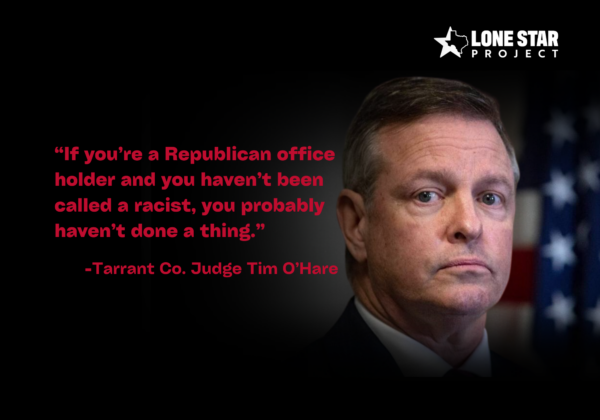Background on pending Texas redistricting litigation
- A decision on Texas congressional and State House redistricting is pending before a three-judge federal district court in San Antonio. The presiding judge is Justice Orlando Garcia who was nominated by President Clinton. He is joined on the panel by District Court Justice Xavier Rodriguez who was nominated by President George W. Bush and by Appeals Court Justice Jerry Smith who was nominated by President Reagan.
- Agreement by at least 2 of the 3 judges is needed for the plaintiffs to win their claims that the plans violate the Voting Rights Act and the U.S. Constitution.
- The congressional and State House district plans drawn by the Republican-controlled Texas Legislature in 2011 are being challenged by several minority plaintiff groups and include the Quesada Plaintiffs who are supported by the Lone Star Project. Also prominent minority advocacy groups are involved in the litigation including NAACP, LULAC, Mexican American Legislative Caucus, Texas Legislative Black Caucus and others. The U.S. Justice Department also weighed in against the two plans midway through the litigation.
- Overall, plaintiffs argue that the maps where drawn with discriminatory intent and discriminatory effect in violation of the U.S. Voting Rights Act and key provisions of the U.S. Constitution.
- Keep in mind that the pending litigation involves the maps drawn by the Texas Legislature in 2011 and not the court-order interim maps (later adopted by Legislature) and used in the 2012 and 2014 elections.
What happens after the Court rules?
- The Court’s decision will not be accompanied by new maps when it is released. Even if the court agrees with the plaintiffs on all claims, consideration of any new maps will be the subject of further court hearings and deliberations.
- If the decision is favorable to the plaintiffs, the Court would likely schedule hearings and/or require briefs to allow the plaintiffs and the State of Texas to identify areas in the current map that are vestiges of the 2011 map and discriminatory to minority Texans. After considering the arguments and any further evidence presented, the Court would rule on whether or not to require changes in the court-imposed interim plans used in 2012 and 2014.
- If the Court finds that the congressional or State House maps were drawn with discriminatory intent, it may also rule that Texas should be subject to new pre-clearance requirements before any future maps adopted by the Legislature can be implemented, an action often referred to as a “bail in.”
- The Court might specify these new requirements in its order or it could ask the parties to the suit to provide arguments suggesting pre-clearance requirements.
Will the ruling be appealed?
- Federal three-judge district court rulings on redistricting cases, unlike most other federal matters, are appealed directly to the U.S. Supreme Court and do not go through the Federal Circuit Court of Appeals.
- It is almost certain that however the San Antonio Court rules, the losing side will ask for a review from the U.S. Supreme Court. The Supreme Court can choose to deny review or can take up the case, which would extend the litigation well into next year.
The redistricting process is long, somewhat arcane but crucially important to insuring that all Texans are fairly represented in Congress and in our Legislature. Please know that extraordinary work has been done by legal counsel representing minority plaintiffs in the Texas redistricting litigation. Without their persistence and skill, the current maps would be much worse, and the litigation would have ended badly long ago.
I am very proud that the Lone Star Project has engaged constructively in the redistricting battle from the very beginning. We are providing valuable technical and research support to the Quesada congressional plaintiffs and their allies in court. We appreciate that many receiving this email have helped provide the financial support needed to do this work and ask your indulgence knowing that as the work continues, we will again call on you for help.



